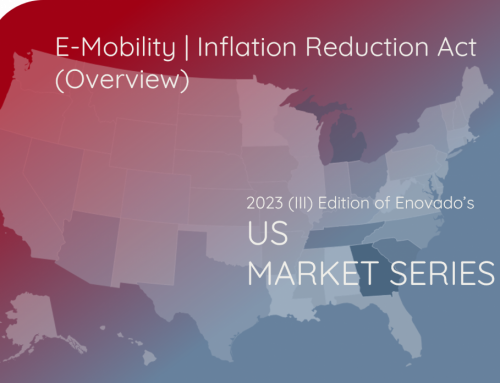The “Tax Cut and Reform Bill” was officially approved on 22nd December 2017, representing one of the most important steps of the American fiscal history. After months of discussion, the US Senate approved the reform promoted by Republicans and declared the first triumph in the Era of Trump. As per the President’s claim, the new financial legislation enacted is designed to promote US economic growth in the US and stimulate real GDP in the short term.
However, the reform has raised several controversies particularly among Democrats who consider the legislation skewed in favor of the wealthy hence contributing against national welfare. Democratic leader Chuck Schumer, for example, alleged that Republicans will soon regret the legislation due to visible negative effects in the mid-term. Highlighting some of the most important changes introduced by the reform include:
• A reduction in tax rate by 3%
• A reduction in single corporate tax rate from 35% to 21%
• A possible reduction of up to 20% of the taxable income for pass-through businesses
• Revocation of alternative minimum tax (AMT) for corporations
• Doubling of the estate tax exemption threshold
• Permanent suspension of individual mandate in the Patient Protection and Affordable care Act
What are the changes introduced by the tax reform?
At first sight, taxpayers might partially rejoice through the 3% reduction on average in each income tax brackets. However, the cut will expire by 2025, thus representing only a temporary victory. Many experts expect also higher taxes by 2027, particularly for those who are in lower brackets. The standard deduction (or in other words the portion of income that is exempt from taxes) is raised but, also in this case, this change will be valid by 2025.
The AMT is repealed for corporation and maintained for individuals but with more exemptions as well as the state tax exemption threshold is raised from 5 mio $ to 10 mio $. And both provision will also be reversed after 2025.
The enacted fiscal legislation reduces the single corporate tax rate from 35% to 21% (vs. an average of 28.2 % in Germany) and suspends the corporate alternative minimum tax. In addition, the territorial tax system will benefit multinationals operating abroad since overseas profits are no longer subject to taxes. Per the Cowen Research Group, large corporates such as Amazon, Google and Facebook will save up to $4.5 billion in taxes in 2018 thanks to the reform (Business Insider, 2017).
Clearly, this measure is an attempt to boost the national economy and to encourage US companies to repatriate their capital inside the national borders, thus serving as an alarm across the rest of the world. The enacted passage also aims towards increasing the number of investments coming from European companies, shifting again the world’s economic center of gravity towards the US, as will be analyzed in greater depth in the following paragraph.
What are the implications for the US Economic Development Agencies (EDA’s)?
Despite its lack of clarity, the fiscal changes introduced by the bill have created the perfect working conditions for many US EDA’s. A tax cut decreasing the effective tax burden (including US state taxes) on companies operating in the US from the current 36.5 % to 23.3% (in addition to the cut of the corporate tax rate), encourages many non-US businesses to move their activities into America. Or as reported by Joachim Lang, director of the Federation of German Industries (BDI) – “Significant incentives to shift corporate operations and investments into the United States of America”.
As per the Centre for European Economic Research (ZEW), the investment flow from Europe to the US is expected to grow up to 31.3% over the next years. Germany in particular stands to possibly increase its outward US FDI activities by 25 % (38.6 billion euro). To fulfil the potential scenario, US EDA’s can play a key role for many investors who seek entry towards the U.S market by wooing with the upcoming tax changes.
The newly established corporate tax rate set at 21% represents a major opportunity for many non-US corporations based in high tax countries. Governments of European countries such as Germany, France and Italy will be prompted towards devising a foolproof strategy to prevent a massive outflow of capital towards the US “It’s very attractive now, the American market, America in general, thanks to the cut of the taxes. People want to come here to invest, and these policies are very good for the economy,” stated Gianluca Mec, CEO of Gianluca Mech S.p.A., a leading Italian pharmaceutical company. To be fair, however, in our FDI related conversations at conferences and tradeshows, we also hear statements of investors being concerned about the longevity of US Tax Reform and whether it will remain in place only partially or in whole.
What are the implications for the non-US corporations?
This situation has certainly created many controversies overseas, particularly in Europe. Indeed, the competitiveness of the new corporate tax rate has raised concerns among many European Ministers, who defined the reform as a “violation of the WTO agreements”.
The US has gone from being a high-tax to a low-tax country if compared to 28.2% in Germany and the 34% in France. Many European companies might be encouraged to deploy fresh investment activities in the US both to benefit from the double advantage of a lower tax rate and the anticipated spurt economic growth expected over the next decade. Considering the mammoth like size of the domestic market, plentiful venture capital, and relatively light workplace regulations, European FDI investment seems a natural step. “The reduction of the federal corporate income tax rate […] results in an income tax benefit increasing the net income of the group for the year 2017 by approximately 1.7 billion euros,” stated the leading German company Daimler. In line with that, BMW also affirmed the reform “will have a positive impact, boosting its 2017 net profit by between 950 million and 1.55 billion euros”.
For high-tax European countries, such as Germany, Italy and France, the cross-border tax burden for inbound investment from the US is diminished less than for outbound investment to the US. Accordingly, it will be recorded an increase in non-US FDI activities in the US that will be not fully balanced with possible additional US FDI activities in high-tax countries, resulting in a net outflow of investment capital. Germany is said to lose its central role in the competition for foreign direct investment due to the significant amount of new investment and jobs shifting from Europe to the US
Beijing also defined Trump’s tax overhaul as a consistent threat to the world economy. China is no longer competitive in terms of both taxes and wages and the gap with the United States is becoming wider. Accordingly, the government has already imposed rigid controls on money outflow. Chinese companies who want to move more than $5 million out of the country must apply for authorization from China’s central bank.
The reform makes also US assets, such as stocks and real estate, more attractive for foreign investor again. Few countries such as Canada, UK, and Ireland will still have a more competitive rate than US. Accordingly, European ministers are already discussing a possible countermeasure to avoid a massive outflow of investments towards the US and many countries are already planning to cut their corporate taxes. “If Germany does not act, it will in the near future have one of the highest corporate tax rates when compared internationally […] Our response to the US tax reform must be a triad of planning certainty, tax cuts and an improvement of depreciation conditions” states the German CSU party.
Another important change concerns pass-through businesses (i.e. partnerships, sole proprietorships and S corporations) and they account for about 95% of US businesses. According to the new conditions, there is a reduction up to 20% of the taxable income. In other words, if the annual income is $100,000, only $80,000 will be taxed, and the saved amount could be reinvested in the business itself.
However, companies that payed high effective tax rates will likely benefit the most as compared to companies with paying lower effective tax rates. For this reason, many US SME’s are still skeptical about the real potential of the reform. The tax cut offers the chance for multinationals to bring back into US their foreign income on “high-profit returns” at a rate of just 10% (with the exception of 12% on cash held offshore and 5% for non-cash assets) even if those changes will not have significant benefits for most small businesses. Furthermore, the tax bill allows companies to immediately deduct the cost of new equipment for a five-year period, and it is to be seen if this represents only an immediate-term positive effect or if it doesn’t offer more uncertainties in the long run.
Which sectors will benefit the most?
One of the key questions in our FDI business is obviously what sectors will benefit most from the reform, and whether they should become a special focus for EDA’s occupied with international lead generation activities:
• Pharmaceutical: many biotech and pharma companies have earned billions dollars overseas and now have a chance to repatriate their capital at a lower rate, saving a large amount of money. Lead generation potential, however, is very low.
• Real estate: a large number of commercial real estate businesses are set up as pass-through business, and accordingly have a good chance to benefit from the tax reduction.
• Telecommunication: companies operating in this sector generally account for a large amount of expenditure in order to upgrade their network. Considering the deductibility of capital investments over the next five years applied by the reform and lower corporate income tax, telecommunications companies would face a fruitful scenario in the US market, wouldn’t the market be so protected.
• Energy: according to Bloomberg Intelligence, oil and gas companies score the second-highest effective tax rate of any sector (37 %), thus having an average reduction potential of their tax rate of 16%.
Conclusions
One is tempted to believe that Trump has apparently created the perfect conditions to ‘make America great again’. A wealth of foreign investments is expected towards the US as well as a repatriation of capitals of many US companies. However, all that glitters is not gold.
The overall enthusiasm might decline in a long-term vision. The effects of the bill are likely to be stronger in the short term and, according to many economists, may backfire in the long run. For this reason, investors should pay attention in undertaking uncertain path only driven by an overall fervor due to the new fiscal measures.
At the same time, EDA’s should use this favorable situation in order to attract international corporations to direct investment activities on home soil. The US market has always been considered extremely attractive for international companies and, thanks to the reform, the conditions seem to be even more promising. It seems to be the right moment to knock on the European doors and convince companies to expand their market in the US.



